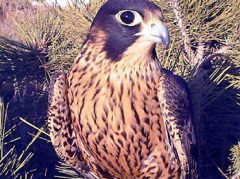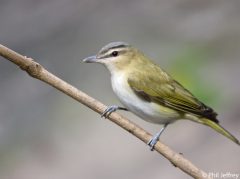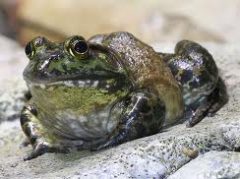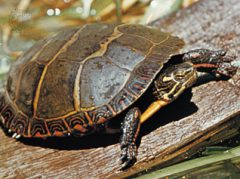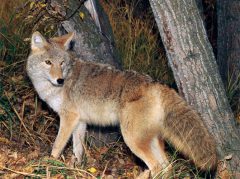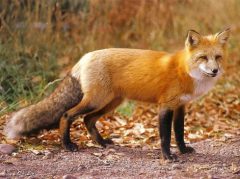Birds • Walk quietly and listen. You may hear the sharp drumming or raucous call of the magnificent Pileated Woodpecker, which may grow up to 19″ long. The bright red flash of its crimson crest and angular black and white wings confirms you have spotted the Pileated the largest of our woodpeckers. Throughout the Irvington Woods are large oval holes left in dead or dying deciduous trees by Pileated Woodpeckers which feed mostly on wood-burrowing insects. You might observe these birds high up in the trees, feasting on the sun-seeking small white berries of poison ivy vines. Listen also for the haunting flute-like notes of the shy Wood Thrush. This spotted brown bird lives deep in the Irvington Woods where it feeds on insects under the leaves on the forest floor, as well as seasonal berries of the native Spicebush, Virginia Creeper and deep purple Pokeweed.
Reptiles • Watch out for the brightly colored Painted Turtle sunning on a log in Marshall’s Pond. In the spring you might come upon the Box Turtle laying eggs in the open field above the reservoir or in soft, warm dirt along the waterline. Look carefully on the ground and you’ll be able to find Garter Snakes and Rat Snakes.
Mammals • Be on the lookout for many mammals living in the woods including coyotes, red foxes, White Tail deer, chipmunks and Gray squirrels.Barney Brook Watershed • Barney Brook and the seasonal streams that begin at the Hermit Wetlands flow through the woods and eventually feed into the Hudson River. The Hudson River is an estuary that blends fresh water from the Hudson Valley and salt water from the Atlantic Ocean, Maintaining the integrity of these fresh watersheds is integral to revitalizing the Hudson River.
*By Shenandoah National Park from Virginia CC BY 2.0 via Wikimedia Commons

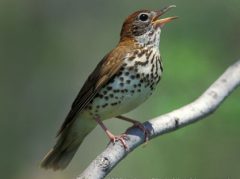
![By Shenandoah National Park from Virginia (Pileated Woodpecker) [CC BY 2.0], via Wikimedia Commons](https://theirvingtonwoods.org/wp-content/uploads/Pileated_Woodpecker_9597212081-240x179.jpg)
